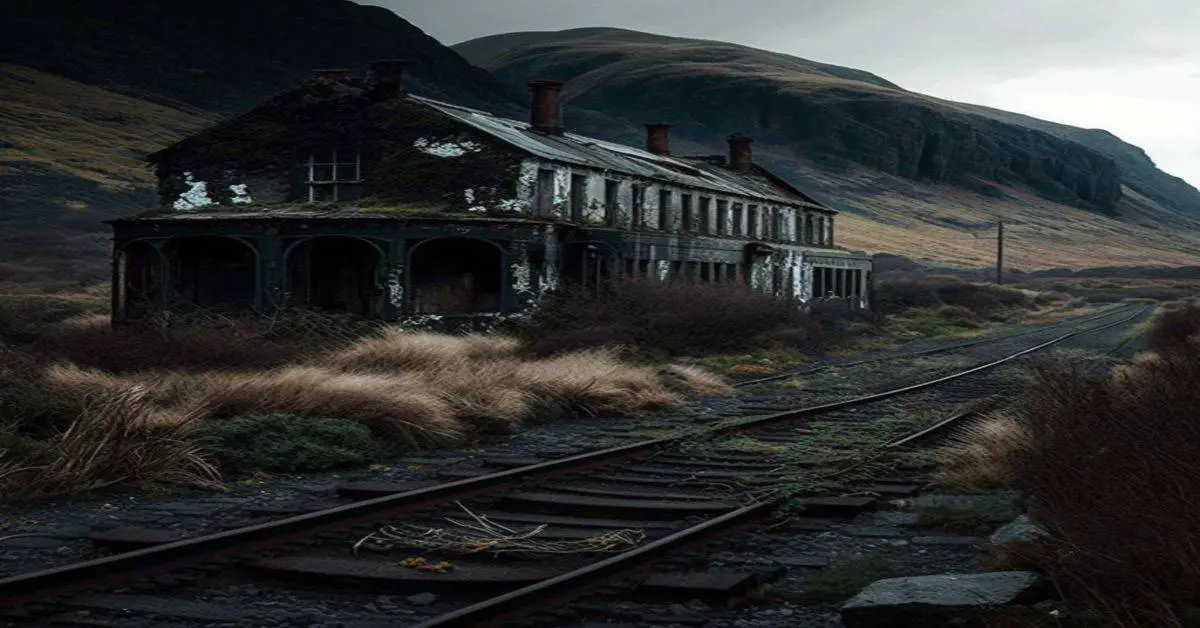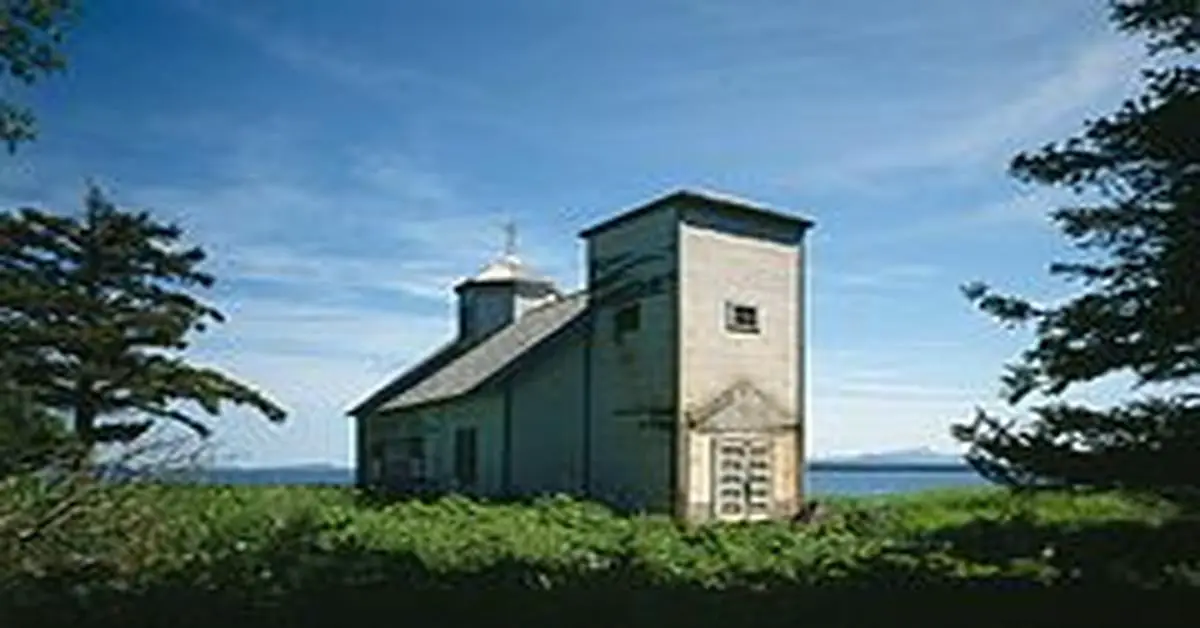Located on the southern bank of the Yukon River in Alaska, Eagle is a town steeped in history and natural beauty. Once a bustling gold rush town, Eagle has transformed over time into a semi-ghost town with a population of around 100 people. Despite this, the town remains a popular tourist destination, attracting visitors from all over the world who come to explore its historic district, museum, and visitor center, and to experience its stunning scenery and outdoor recreation opportunities.
The town’s history is rich and varied, with its roots going back to the late 1800s when gold was discovered in the area. During the gold rush, Eagle became a bustling hub of activity, with thousands of prospectors flocking to the town in search of fortune. Today, Eagle’s historic district is a testament to the town’s past, with many of its original buildings and structures still standing.
Alongside its rich history, Eagle is also known for its haunting beauty, with its rugged landscape and raw wilderness attracting adventurers and nature enthusiasts alike. In this article, we will delve into the fascinating history, geography, and climate of Eagle, and explore the unique beauty that makes it a must-visit destination.
Key Takeaways
- Eagle, Alaska is a small town located on the southern bank of the Yukon River with a population of around 100 people.
- Despite its small size, Eagle is a popular tourist destination known for its haunting beauty, rugged landscape, and raw wilderness.
- Visitors can explore the area through outdoor activities such as hiking, fishing, camping, and kayaking in the summer, and cross-country skiing, snowmobiling, and aurora viewing in the winter.
- Eagle has a rich history and culture that is showcased through its well-preserved buildings from the gold rush era, the Eagle Historical Society and Museums, and the Yukon-Charley Rivers National Preserve Visitor Center.
Location and History
Located on the south bank of the Yukon River, Eagle was originally a traditional village of the Athabascan people before it became a renowned gold rush town and the site of Fort Egbert in the 1800s.
The town’s proximity to the Canadian border and its ideal location for steamboats to land made it a strategic spot for the US military to establish a post there.
The American military presence in Eagle resulted from the Alaska Purchase, making Alaska a US territory in 1867.
Fort Egbert was established in Eagle to maintain control of the border and to protect US interests in the region.
Despite the military presence, Eagle continued growing and became the City of Eagle in 1901.
The town has a rich history, and its connection to the gold rush era is evident in the well-preserved buildings in the historic district.
Today, Eagle is a semi-ghost town with a population of around 100 people.
The town is only open for about half the year, but it remains a popular tourist destination because of its scenic beauty, outdoor recreation opportunities, and fascinating history.
Population and Tourism
With a population of only around 100 people and limited access for only half the year, the semi-ghost town of Eagle, situated on the south bank of the Yukon river, is a truly unique and isolated destination for those seeking a glimpse into the bygone era of the gold rush.
Despite its small size, Eagle has plenty to offer visitors. The town is home to a number of tourist attractions, including a historic district with many well-preserved buildings, a museum, and a visitor center. Visitors can also enjoy outdoor recreation opportunities in the surrounding wilderness, such as hiking and fishing.
Beyond its tourist attractions, Eagle also has a close-knit local community that is proud of its town’s history and culture. The town’s residents are welcoming to visitors and happy to share their knowledge about Eagle’s past and present.
While Eagle may be isolated and have a small population, it is a vibrant and fascinating community that offers a unique glimpse into a bygone era. Anyone who visits Eagle is sure to leave with a greater appreciation for Alaska’s rich history and natural beauty.
Geography and Climate
Surrounded by wilderness and abundant wildlife, the small town of Eagle on the south bank of the Yukon River faces harsh winters due to its remote location in northern Alaska. Despite its challenging climate, Eagle offers nature lovers and adventure seekers a unique and beautiful experience.
Here are three things to know about Eagle’s geography and climate:
- Wildlife and transportation: Eagle is surrounded by pristine wilderness that provides a habitat for a diverse range of wildlife, including moose, caribou, wolves, and bears. Visitors can explore the area by hiking, fishing, or guided tour. The town is accessible by boat during the summer and by small planes throughout the year.
- Outdoor recreation opportunities: Eagle is a haven for outdoor enthusiasts. Visitors can enjoy activities such as hiking, fishing, camping, and kayaking in the summer. During the winter, the town offers cross-country skiing, snowmobiling, and aurora viewing opportunities. The breathtaking natural scenery and abundant outdoor recreation opportunities make Eagle a popular adventure destination.
- Attractions: Besides its stunning natural beauty, Eagle has several attractions that showcase its rich history and culture. The town’s historic district features well-preserved buildings from the gold rush era, and the Eagle Historical Society and Museums provide insights into the town’s fascinating past. The Yukon River is also an important part of Eagle’s history and culture, and visitors can learn about its significance at the Yukon-Charley Rivers National Preserve Visitor Center.
Frequently Asked Questions
What is the current economic situation in Eagle, and how does the town sustain itself financially?
Eagle’s economy relies heavily on tourism revenue, due to its remote location and small population. However, the impact of COVID-19 has resulted in a decrease in tourism, affecting the town’s financial sustainability.
Are there any notable cultural or artistic events or attractions in Eagle?
Eagle, Alaska has a rich cultural history, reflected in its well-preserved buildings and museums. The town hosts artistic events such as the annual Yukon 800 Boat Race, showcasing local talent and traditions.
What is the local wildlife like in Eagle, and are there any particularly rare or endangered species in the area?
Eagle, Alaska boasts diverse local wildlife, including moose, black bears, and bald eagles. Conservation efforts have been made to protect the rare and endangered Yukon River salmon, which are crucial to the ecosystem.
How has the town of Eagle changed and evolved since its establishment as a gold rush town?
Eagle, Alaska evolved from a traditional village to a gold rush town, later becoming a US military post. Its history’s impact is felt through its well-preserved historic district. Community preservation is vital, as environmental changes threaten its future prospects.
Are there any unique or interesting local traditions or customs in Eagle that visitors should be aware of?
Eagle, Alaska has a rich history of traditional practices and local customs. The Athabascan people who originally inhabited the area still maintain their cultural traditions, while the town’s gold rush history is celebrated with annual events and festivals.

